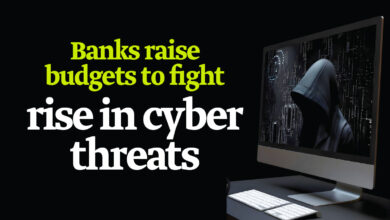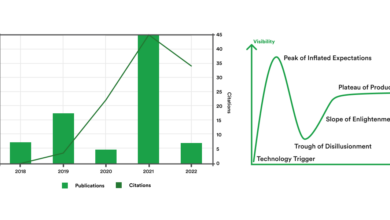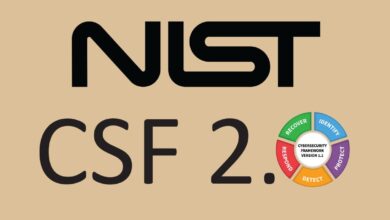
How Cryptocurrency and Blockchain Reshape Supply Chain Security
How cryptocurrency and blockchain are reshaping supply chain security is a game-changer. Imagine a world where every product’s journey, from origin to consumer, is transparent and virtually tamper-proof. This isn’t science fiction; blockchain’s decentralized, secure ledger and crypto’s fast, secure payment systems are revolutionizing how we track, manage, and secure goods, dramatically reducing fraud and boosting efficiency. This post dives into the exciting ways this technology is transforming supply chains worldwide.
From enhancing transparency and traceability to streamlining processes and reducing costs, the impact is profound. We’ll explore how blockchain’s immutable records improve data integrity, preventing counterfeiting and manipulation. We’ll also look at the role of cryptocurrencies in facilitating faster and more secure payments, especially crucial for complex international supply chains. Get ready to explore the future of supply chain management!
Enhanced Transparency and Traceability
The opacity inherent in traditional supply chains has long been a breeding ground for inefficiencies, fraud, and a lack of accountability. Blockchain technology offers a revolutionary solution by creating a shared, immutable ledger that records every transaction and movement of goods throughout the supply chain. This enhanced transparency provides unprecedented visibility, allowing all stakeholders to access real-time information and track products from origin to consumer.Blockchain’s impact on supply chain visibility is transformative.
Instead of relying on disparate, often unreliable, systems for tracking goods, blockchain creates a single source of truth. This shared ledger eliminates information silos and allows for seamless data sharing among manufacturers, distributors, retailers, and even consumers. This improved visibility isn’t just about knowing where a product is; it’s about understanding its entire journey, including its manufacturing process, handling, and transportation history.
Real-time Tracking and its Impact on Counterfeiting and Fraud
Real-time tracking, enabled by blockchain, significantly reduces the potential for counterfeiting and fraud. By providing a verifiable record of a product’s journey, blockchain makes it extremely difficult to introduce counterfeit goods into the supply chain. Each stage of the product’s lifecycle is recorded on the blockchain, creating an auditable trail that can be easily verified. If a product’s history doesn’t match the information on the blockchain, it’s immediately flagged as suspicious.
This immediacy allows for swift intervention, preventing counterfeit products from reaching consumers. For example, a luxury goods company could use blockchain to track its products from the raw materials stage to the point of sale, ensuring that every item sold is genuine. Any attempt to introduce a fake product would be instantly detectable.
Verifying Product Origins and Authenticity
Blockchain facilitates the verification of product origins and authenticity by providing a tamper-proof record of a product’s entire journey. This is particularly valuable for products with complex supply chains, such as food, pharmaceuticals, and luxury goods, where traceability is crucial for ensuring quality and safety. Consumers can scan a product’s unique blockchain identifier to access its complete history, confirming its authenticity and origin.
This increased transparency builds trust between brands and consumers and protects consumers from potentially harmful or fraudulent products. For instance, a consumer could scan a QR code on a package of coffee beans and verify that the beans were ethically sourced and sustainably grown, bolstering the brand’s commitment to transparency and ethical sourcing.
Comparison of Traditional and Blockchain-Based Supply Chain Tracking
The following table compares traditional supply chain tracking methods with blockchain-based solutions:
| Feature | Traditional Methods | Blockchain-Based Solutions |
|---|---|---|
| Data Security | Vulnerable to hacking and data breaches | Highly secure and tamper-proof |
| Transparency | Limited visibility, information silos | Complete transparency for all authorized stakeholders |
| Traceability | Difficult and time-consuming to track products | Real-time tracking and complete traceability |
| Cost | Can be expensive and inefficient | Potentially reduces costs through increased efficiency and reduced fraud |
Improved Security and Data Integrity: How Cryptocurrency And Blockchain Are Reshaping Supply Chain Security

The integration of blockchain technology into supply chain management offers a significant leap forward in security and data integrity. By leveraging cryptographic principles and immutable record-keeping, blockchain drastically reduces the vulnerabilities inherent in traditional, centralized systems. This enhanced security translates to greater trust, reduced fraud, and improved efficiency throughout the entire supply chain.Cryptography plays a crucial role in securing supply chain data stored on a blockchain.
Each transaction or data entry is encrypted using sophisticated cryptographic algorithms, making it virtually impossible for unauthorized parties to access or alter the information. This encryption ensures the confidentiality and authenticity of the data, protecting sensitive information from cyber threats and malicious actors.
Blockchain’s Role in Preventing Data Tampering
The immutable nature of blockchain records is a cornerstone of its enhanced security. Once data is added to a blockchain, it cannot be altered or deleted. This prevents data tampering and manipulation, ensuring the integrity of the supply chain information throughout its lifecycle. Each block in the chain is cryptographically linked to the previous block, creating a chronological and tamper-evident record.
Any attempt to modify past data would immediately be detectable, as it would break the cryptographic chain. This provides a high degree of accountability and transparency.
Comparison of Centralized and Decentralized Systems, How cryptocurrency and blockchain are reshaping supply chain security
Centralized supply chain management systems, typically reliant on a single database or server, are vulnerable to single points of failure and data breaches. A hacker gaining access to the central database could compromise the entire system, leading to significant disruptions and data loss. Decentralized systems, on the other hand, distribute data across multiple nodes, making them far more resilient to attacks.
Even if one node is compromised, the remaining nodes maintain the integrity of the data. This inherent redundancy significantly reduces the risk of data loss or manipulation. Furthermore, the transparency afforded by blockchain reduces the risk of internal fraud or manipulation.
Blockchain’s Protection of Sensitive Information
Blockchain technology provides a robust mechanism for securing sensitive information, such as intellectual property (IP) and trade secrets, within the supply chain. By recording ownership and provenance information on a blockchain, companies can establish a clear chain of custody, deterring counterfeiting and IP theft. For example, a pharmaceutical company could use blockchain to track the movement of its drugs, ensuring that only authentic products reach the market.
Similarly, a manufacturer could use blockchain to track the origin and authenticity of its components, preventing the use of counterfeit parts that could compromise product quality or safety. The cryptographic security and immutability of blockchain ensure that this sensitive information remains confidential and protected throughout the supply chain.
Streamlined Processes and Reduced Costs
The integration of cryptocurrency and blockchain technology into supply chain management promises a significant leap forward in efficiency and cost reduction. By automating processes, enhancing transparency, and minimizing paperwork, blockchain offers a compelling solution to long-standing challenges within the industry. This results in faster turnaround times, reduced operational expenses, and improved overall profitability.Smart contracts, self-executing contracts with the terms of the agreement between buyer and seller directly written into lines of code, are a key driver of this efficiency.
They automate many previously manual tasks, such as payments, order fulfillment, and inventory tracking, reducing the need for extensive paperwork and human intervention. This automation minimizes errors, speeds up transactions, and frees up valuable time and resources for other crucial aspects of the supply chain.
Automation through Smart Contracts
Smart contracts eliminate the need for intermediaries in many transactions. For example, consider a scenario where a manufacturer ships goods to a retailer. Traditionally, this would involve numerous documents, confirmations, and manual checks at each stage. With smart contracts, the agreement, including payment terms and delivery schedules, is encoded on the blockchain. Once the goods are shipped and verified by a third-party logistics provider (perhaps using IoT sensors to confirm delivery), the smart contract automatically triggers payment to the manufacturer.
This removes delays associated with manual invoice processing, reconciliation, and payment approvals. The entire process becomes transparent, secure, and significantly faster.
Cost Savings in Inventory Management and Logistics
Blockchain technology provides real-time visibility into inventory levels across the entire supply chain. This eliminates the need for costly and time-consuming manual inventory checks and reconciliation. Businesses can accurately track goods from origin to destination, reducing stockouts and overstocking. Improved inventory management leads to reduced warehousing costs, minimized waste from spoilage or obsolescence, and optimized logistics planning. For instance, a company using blockchain to track perishable goods can predict demand more accurately, reducing waste due to spoilage and optimizing transportation routes to minimize delivery times.
This translates directly into substantial cost savings. A study by [Insert credible source and study details here, e.g., “a recent Gartner report estimated that blockchain can reduce supply chain costs by up to 25%”] provides quantitative support for these cost-saving claims.
Blockchain Optimization Scenario: Pharmaceutical Supply Chain
Imagine a pharmaceutical company using blockchain to track its temperature-sensitive medications. Each shipment is recorded on the blockchain, including location, temperature readings (via IoT sensors), and handling details. This provides complete transparency and traceability for every batch, from manufacturing to the end consumer. If a problem arises, such as a temperature breach during transit, the blockchain instantly alerts all relevant parties, allowing for swift intervention and minimizing the risk of spoiled goods or compromised medication.
This improved traceability enhances product safety, reduces the risk of recalls, and saves the company significant costs associated with product loss and reputational damage.
Reduced Delays and Improved Communication
Blockchain’s decentralized and transparent nature fosters better communication and collaboration among all stakeholders in the supply chain. Real-time data sharing eliminates the need for repeated email exchanges, phone calls, and manual updates. This leads to faster problem resolution, improved coordination, and reduced delays. For example, if a shipment is delayed due to unforeseen circumstances, all parties involved are immediately notified through the blockchain network, enabling proactive adjustments and minimizing disruption.
This enhanced communication streamlines operations, leading to significant time and cost savings.
Increased Efficiency and Collaboration
Blockchain technology is revolutionizing supply chain management by fostering unprecedented levels of collaboration and efficiency. By creating a shared, immutable ledger accessible to all authorized parties, blockchain eliminates the need for intermediaries and significantly streamlines information flow. This shared transparency fosters trust and accountability, leading to quicker processing times and reduced operational costs.The shared ledger at the heart of blockchain technology is key to improved efficiency.
Every transaction, from raw material sourcing to final product delivery, is recorded on this ledger, creating a single source of truth. This eliminates data discrepancies that often arise from multiple, independent databases, leading to delays and errors. For example, a manufacturer can instantly verify the authenticity of materials supplied by a vendor, reducing the risk of counterfeit products and improving quality control.
Simultaneously, retailers can track shipments in real-time, optimizing inventory management and improving delivery predictability.
Shared Ledger Data Consistency and Discrepancy Reduction
The use of a shared, immutable ledger significantly improves data consistency across the entire supply chain. Instead of relying on multiple, potentially conflicting databases maintained by different parties, all participants have access to the same, verified information. This eliminates the time-consuming process of reconciling discrepancies between different systems, leading to faster transaction processing and reduced errors. For instance, imagine a situation where a product is damaged during transit.
With a blockchain-based system, all parties involved—the shipper, the carrier, and the receiver—can immediately access the same information regarding the damage, facilitating faster claims processing and resolution. The transparent nature of the shared ledger ensures that everyone is on the same page, reducing the potential for disputes and misunderstandings.
Challenges in Blockchain Implementation
Despite the potential benefits, implementing blockchain technology in existing supply chains presents several challenges. One significant hurdle is the cost and complexity of integrating blockchain solutions into legacy systems. Many companies rely on outdated infrastructure that may not be compatible with blockchain technology, requiring significant investment in upgrading hardware and software. Furthermore, establishing a consensus among all supply chain partners regarding the implementation and governance of the blockchain system can be challenging, particularly in complex, multi-tiered supply chains.
Security concerns, such as the potential for hacking or data breaches, also need to be carefully addressed. Finally, the lack of standardized protocols and regulations for blockchain-based supply chain management can create interoperability issues between different systems.
Benefits and Drawbacks of Blockchain Adoption for Supply Chain Management
Let’s weigh the pros and cons of integrating blockchain into supply chain management:
- Benefits:
- Enhanced transparency and traceability
- Improved security and data integrity
- Streamlined processes and reduced costs
- Increased efficiency and collaboration
- Reduced counterfeiting and fraud
- Improved supply chain resilience
- Drawbacks:
- High initial investment costs
- Complexity of implementation and integration
- Scalability challenges
- Lack of standardization and interoperability
- Security vulnerabilities (though mitigated by design)
- Regulatory uncertainty
Impact on Food Safety and Product Recall
Blockchain technology is revolutionizing food safety and product recall processes by providing an unprecedented level of transparency and traceability throughout the entire supply chain. This enhanced visibility allows for quicker identification of contaminated products, faster recalls, and ultimately, a reduction in the potential harm to consumers. The immutable nature of blockchain records ensures data integrity, building trust among all stakeholders.Blockchain enhances traceability and accountability in food supply chains by creating a permanent, tamper-proof record of a food product’s journey from origin to consumer.
Each step, from farm to processing plant to distribution center to retail store, is documented with timestamps and verifiable data, creating a detailed audit trail. This detailed history allows for quick identification of the source of contamination in the event of a foodborne illness outbreak, significantly reducing the time and resources needed to pinpoint the problem. This improved accountability also incentivizes all participants in the supply chain to maintain high safety standards.
Enhanced Traceability in Food Supply Chains
The implementation of blockchain allows for a granular level of tracking, recording details such as harvest date, location, processing methods, transportation conditions, and storage temperatures at every stage. This detailed information is accessible to all authorized parties, enabling real-time monitoring of food products and facilitating immediate responses to potential safety concerns. For example, a retailer can quickly identify which specific batches of lettuce were sourced from a farm experiencing an E.
coli outbreak, allowing for immediate removal from shelves. This rapid response minimizes the risk of widespread contamination and illness.
Expedited Product Recalls and Minimized Impact
Blockchain drastically improves the speed and efficiency of product recalls. With instant access to the complete history of a product’s journey, companies can identify all affected products and their locations within minutes, rather than days or weeks. This rapid identification allows for targeted recalls, minimizing the number of products removed from circulation and reducing the overall financial and reputational impact on the company.
Furthermore, consumers can be quickly notified through various channels, including mobile apps linked to the blockchain, reducing their exposure to potentially harmful products.
Tracking Food Products from Farm to Table
Blockchain’s impact on food safety extends beyond recall situations. By tracking food products from farm to table, consumers gain confidence in the origin and quality of their food. This transparency empowers consumers to make informed choices and support businesses committed to sustainable and ethical practices. Furthermore, this enhanced traceability helps prevent fraud and counterfeiting, protecting both consumers and businesses from potentially harmful or substandard products.
For instance, a consumer could scan a QR code on a package of strawberries and access the complete history of the fruit, from the specific farm it was grown on to the date it arrived at the store.
Visual Representation of a Food Product Recall
Imagine a visual representation of a food product recall using blockchain. Let’s say a batch of chicken is found to be contaminated. A central blockchain database records the specific batch number (e.g., Batch#12345). This batch number is linked to every step of the chicken’s journey: the farm it originated from, the processing plant, the distribution centers, and the specific retail stores where it was shipped.
When the contamination is discovered, the blockchain is updated instantly, marking Batch#12345 as contaminated. A visual representation might show this as a red flag or warning symbol next to Batch#12345 on a network map illustrating the supply chain. All participants in the supply chain – the farm, the processor, distributors, and retailers – immediately receive this update.
They can then instantly identify all packages of Batch#12345 in their possession and initiate removal from shelves or recall procedures. This visual map, updated in real-time through the blockchain, shows a clear, concise path of the contaminated product, allowing for efficient and targeted removal. The entire process, from discovery to removal, is dramatically faster and more efficient than traditional methods, significantly reducing the risk to consumers and the economic impact on the businesses involved.
Addressing Counterfeiting and Product Piracy
The rise of counterfeiting and product piracy poses a significant threat to businesses and consumers alike, resulting in substantial financial losses and safety risks. Traditional methods of combating these issues often prove insufficient, leading to a growing need for innovative solutions. Blockchain technology, with its inherent security and transparency, offers a powerful tool to address this challenge across diverse industries.
Its decentralized and immutable nature makes it incredibly difficult to tamper with product provenance information, creating a robust system for verifying authenticity.Blockchain’s effectiveness in combating counterfeiting stems from its ability to create a permanent, verifiable record of a product’s journey from origin to consumer. Each stage of the supply chain, from raw material sourcing to manufacturing and distribution, can be recorded on the blockchain, creating a unique digital identity for each product.
This digital fingerprint allows consumers and businesses to verify the authenticity of a product with ease, significantly reducing the risk of encountering counterfeit goods.
Blockchain’s Role in Product Authentication and Fraud Prevention
Blockchain technology facilitates product authentication by creating a secure, tamper-proof digital ledger that tracks a product’s entire lifecycle. This ledger contains crucial information such as the product’s origin, manufacturing date, materials used, and movement through the supply chain. Each transaction is cryptographically secured, making it virtually impossible to alter or delete information without detection. This transparent and traceable system allows consumers to scan a product’s unique identifier (e.g., a QR code linked to the blockchain) to verify its authenticity and origin, thus preventing fraud.
The blockchain also provides a mechanism for tracking and identifying counterfeit products, allowing for quicker responses to prevent their distribution and sale.
Comparison of Traditional and Blockchain-Based Anti-Counterfeiting Measures
Traditional anti-counterfeiting measures often rely on physical security features like holograms, watermarks, and serial numbers, which can be easily replicated or forged. These methods are often costly and inefficient, requiring significant resources for verification and enforcement. In contrast, blockchain-based solutions offer a more robust and scalable approach. The decentralized and immutable nature of the blockchain makes it extremely difficult to replicate or tamper with the product’s digital identity.
Furthermore, blockchain solutions can be integrated with existing supply chain management systems, enhancing efficiency and reducing costs associated with verification and authentication. The use of smart contracts can automate processes, such as payment releases upon verification of authenticity, further improving efficiency and security.
Examples of Successful Blockchain Implementations
Several industries have successfully implemented blockchain technology to combat product piracy. For example, the luxury goods industry, which is particularly vulnerable to counterfeiting, has begun using blockchain to track high-value items, ensuring their authenticity. Pharmaceutical companies are leveraging blockchain to track drugs throughout their supply chain, preventing the distribution of counterfeit medications. Similarly, the food industry is employing blockchain to enhance food traceability and combat food fraud, providing consumers with greater confidence in the safety and origin of their food products.
These examples demonstrate the versatility and effectiveness of blockchain in securing supply chains and combating counterfeiting across diverse sectors. The implementation of blockchain often involves partnerships between businesses, technology providers, and regulatory bodies to ensure data integrity and interoperability across the supply chain. This collaborative approach is crucial for maximizing the effectiveness of blockchain-based anti-counterfeiting solutions.
The Role of Cryptocurrency in Supply Chain Finance

Cryptocurrencies are poised to revolutionize supply chain finance by offering faster, more secure, and potentially cheaper payment solutions. Their decentralized nature and inherent transparency offer significant advantages over traditional systems, particularly in international trade where multiple intermediaries and complex regulations often lead to delays and increased costs. However, it’s crucial to understand both the benefits and the challenges before fully embracing this emerging technology.Faster and More Secure Payments in Supply ChainsCryptocurrency transactions bypass traditional banking systems, significantly reducing processing times.
Smart contracts, self-executing agreements written in code, can automate payments upon fulfillment of certain conditions, such as delivery of goods or completion of services. This automation eliminates manual verification steps, accelerating the payment process and minimizing the risk of fraud. The cryptographic security inherent in blockchain technology also enhances security, protecting transactions from unauthorized access and manipulation. For example, a shipment of goods from a manufacturer in China to a retailer in the US could be tracked and paid for using a cryptocurrency, with payments automatically released upon confirmation of delivery, all without the delays associated with international bank transfers.Cross-Border Transaction AdvantagesCryptocurrencies simplify cross-border transactions by eliminating the need for multiple intermediaries, such as banks and payment processors.
This reduces transaction fees and speeds up the payment process. The decentralized nature of cryptocurrencies means that transactions can be processed 24/7, regardless of geographical location or banking holidays. This is particularly beneficial for global supply chains that operate across multiple time zones and jurisdictions. Imagine a scenario where a company in Europe needs to pay a supplier in Africa; cryptocurrency facilitates a swift, transparent, and cost-effective transaction without reliance on potentially slow and expensive international banking systems.Potential Risks and ChallengesWhile offering significant advantages, cryptocurrency adoption in supply chain finance also presents challenges.
Volatility in cryptocurrency prices poses a significant risk, as fluctuations can impact the value of payments. Regulatory uncertainty in many jurisdictions adds another layer of complexity. The lack of widespread adoption and the technical expertise required to implement cryptocurrency solutions can also hinder its uptake. Furthermore, the anonymity associated with some cryptocurrencies can be a concern for compliance and anti-money laundering efforts.
Robust security measures are crucial to mitigate the risk of hacking and theft, and clear regulatory frameworks are needed to foster trust and transparency.Comparison of Payment MethodsTraditional payment methods, such as bank transfers and letters of credit, are often slow, expensive, and susceptible to fraud. International transfers can take several days or even weeks to process, incurring significant fees.
Cryptocurrency-based solutions, on the other hand, offer faster processing times, lower transaction fees, and enhanced security through cryptographic methods. However, the volatility of cryptocurrency prices and the lack of regulatory clarity represent key risks. A comparison table would highlight these differences clearly:
| Feature | Traditional Methods | Cryptocurrency Solutions |
|---|---|---|
| Speed | Slow (days to weeks) | Fast (minutes to hours) |
| Cost | High (transaction fees, intermediary charges) | Potentially lower (depending on network fees) |
| Security | Moderate (susceptible to fraud) | High (cryptographic security) |
| Transparency | Limited | High (blockchain transparency) |
| Volatility | Low | High |
Last Word
The integration of cryptocurrency and blockchain technology promises a future where supply chains are not only more secure and efficient but also significantly more transparent and trustworthy. By leveraging the power of distributed ledgers and cryptographic security, businesses can build more resilient and reliable supply networks, reducing risks and ultimately benefiting consumers. While challenges remain in widespread adoption, the potential for positive transformation is undeniable, making this a space to watch closely.
Question & Answer Hub
What are the biggest challenges in implementing blockchain in existing supply chains?
Integrating blockchain into established systems can be complex and costly. Resistance to change from stakeholders, a lack of standardized protocols, and the need for significant upfront investment are common hurdles.
How does blockchain improve food safety?
Blockchain enables real-time tracking of food products from farm to table, allowing for rapid identification of contaminated batches and faster, more efficient recalls. This increased transparency boosts consumer confidence and minimizes the impact of foodborne illnesses.
Is cryptocurrency always necessary for blockchain in supply chain applications?
No. While cryptocurrencies can facilitate secure and fast payments, blockchain technology itself can be implemented without them. Many supply chain applications leverage blockchain’s security and transparency features without relying on cryptocurrencies for transactions.
What are the environmental concerns related to cryptocurrency use in supply chains?
The energy consumption of some cryptocurrencies, particularly those using proof-of-work consensus mechanisms, is a significant environmental concern. However, the development of more energy-efficient cryptocurrencies and blockchain protocols is ongoing.



